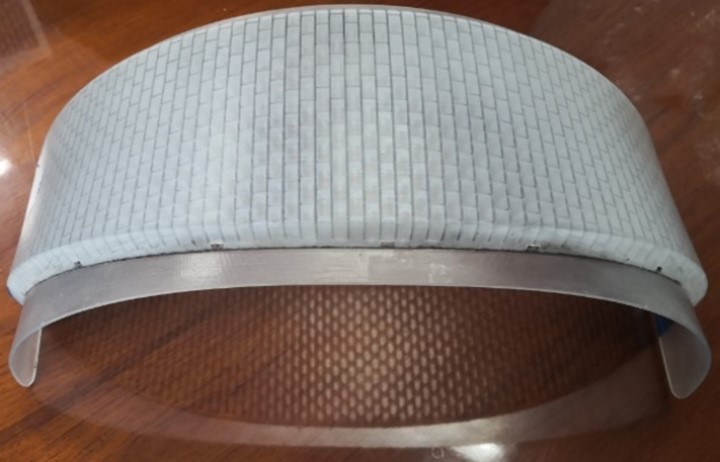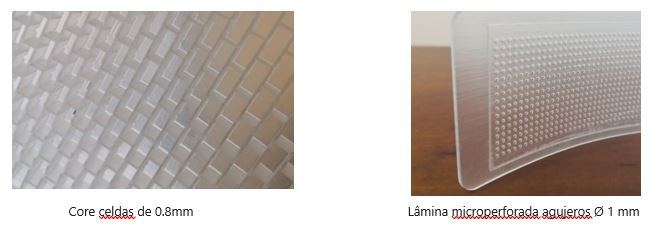Additive manufacturing, known as 3D printing, is transforming the aerospace industry by enabling the creation of complex components with optimized geometries and advanced materials. This technology, which builds three-dimensional parts by layering polymer, metal, or ceramic materials, is key to manufacturing lightweight, intricate, and customized pieces, enhancing aircraft efficiency and safety.
Additive manufacturing has found diverse applications in the aerospace industry, from producing structural components to airflow ducts and engine parts. Its ability to create complex internal structures reduces component weight without sacrificing strength, allowing for innovative shapes not feasible with conventional methods.
This technology offers significant advantages such as reduced development and manufacturing time, eliminating complex assembly processes, and enabling the integration of multiple functions into a single piece, thereby reducing overall weight and saving fuel. It facilitates part customization according to specific needs, optimizing performance and efficiency, as well as the production of prototypes and spare parts, reducing costs and manufacturing times.
Despite its advantages, additive manufacturing faces challenges in material and process certification, surface finishes, regulations, and quality control. However, it is expected that with technological advancements and collaboration between industry, academia, and regulatory bodies, additive manufacturing will play a crucial role in aerospace component production, driving more efficient, safer, and sustainable aircraft.
Real application in the LILIUM project: Acoustic liners manufacturing using SLA technology.
Aernnova is immersed in the design and manufacturing of the wing, canard and flaps of the Lilium Jet. The Lilium Jet is a fully electric vertical take-off and landing aircraft, designed to offer leading capacity, low noise levels, and high performance with zero operational emissions, developed by Lilium Aviation.
The project includes several innovative activities in engineering and manufacturing, such as acoustic tests to assess engine noise during takeoff and landing, drainage tests for acoustic components, and duct behavior at different revolutions. Noise reduction is crucial for the aerospace industry and the environment. Noise during takeoffs and landings can affect human health, community well-being, and wildlife, posing a problem of noise pollution. Lilium Jet has designed motor ducts with acoustic linings that capture and dissipate noise before it spreads. The low noise signature allows for operations in urban areas. Duct housings and linings contain noise, unlike open propellers. This innovation contributes to environmental sustainability and improves social acceptance of aviation and airport infrastructure.
The purpose of the test is to verify the aeroacoustic performance of perforated and sandwich composition linings, as well as to develop and verify the manufacturing methods for composite linings. Each composite lining will be manufactured by bonding 2 sheets to a lightweight honeycomb core.
The noise absorption is based on 6 composite acoustic diffusers consisting of a micro-perforated layer serving as a composite acoustic barrier, with holes of 1 mm diameter spaced at a specific distance fulfilling a requirement of noise penetration density based on the exposed area (front, middle, or rear) and a surface finish of Ra 1.6. The other layer is composed of a sandwich structure honeycomb with walls of 0.8 mm thickness that perfectly fit with the location of the micro-perforated sheet, aligning it with the holes to allow noise to pass through.

The test results would aid in understanding the aeroacoustic performance of composite linings and comparing it with available numerical estimations. Additionally, this campaign will assist in developing and validating the manufacturing concept and assessing manufacturing-related impacts on aeroacoustics.
The starting point for the interior ducts is composite material, a commercial core. Aernnova Engineering Division (hereafter AED), in collaboration with Lilium, proposed utilizing additive manufacturing due to the complexity of the surfaces and the challenging integration of noise absorption components. After exploring various alternatives and considering Lilium’s requirements, AED opted for the finishes and precision offered by SLA technology with a transparent polymer material WaterShed®XC 11122.
In the final phase, the prototype printing has been completed for the drainage study named “Environmental Test Specimen,” aiming to demonstrate the water evacuation capacity of the engine during “cruise” and “hover” flight phases. Drainage holes have been added to the bottom of the acoustic diffusers (“slotting”) according to the data provided by Lilium for prototype drainage.










